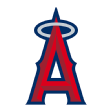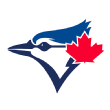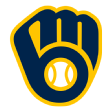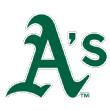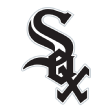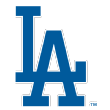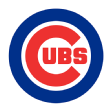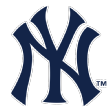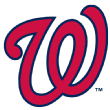On Opening Day, everybody gets to have hope.
That holds true for the historically spoiled fans of the Yankees and for the historically beleaguered fans of the Marlins. It's true for the Cubs on Chicago's North Side, and for the White Sox on the South Side. Of course, hope is not created equal.
Last season was unusually predictable, with consensus preseason forecasts nailing all six eventual division winners. That held true in the postseason as well, where the World Series pitted a pair of 100-win teams for the first time since 1970.
As I've written a million times, forecasts are not opinion, and aren't even really predictions. What forecasts do is create baselines of expectation for each team and for the league as a whole. They also create a range of possibilities, and it is within this realm that hope resides.
Over the course of the winter and all during spring training, I regularly run simulations of the coming season. The numbers used in these sims are generated by my projection, evaluation and tracking system I call MLBPET.
One layer of complexity I added was to fold in breakout and collapse rates. That is: How likely is a player to produce WAR at a clip 20 percent above his baseline forecast? How likely is he to be 20 percent worse? This concept, introduced to me through the work of FiveThirtyEight's Nate Silver back in his Baseball Prospectus days, aids in the visualization of the huge array of possible outcomes over the course of something as complicated as a Major League Baseball season.
Here, then, is where we come back to hope. By factoring in those collapse and breakout rates, every team in baseball made the postseason in at least some of the simulations. The Astros were the most consistent at getting into the postseason, while the Marlins saw October baseball the least often. No surprises there. But every team, in some parallel universe somewhere, got to the playoffs.
Not every team got to win a virtual World Series. In fact, only five teams won titles in at least 10 percent of the simulations. These are the superteams -- the Astros, Dodgers, Cubs, Yankees and Indians. The Nationals and Red Sox both won a little over 7 percent of the sims. These seven teams currently comprise baseball's crowded elite tier.
Meanwhile, six teams didn't win any simulated titles, while 10 others won fewer than 1 percent of them. Hope, it seems, goes only so far.
How can we change that?
I decided to run a special set of sims by messing with those breakout and collapse rates. How many breakout seasons do those 23 non-elite teams need to enter the elite tier (defined here as winning at least 7 percent of the simulated titles)? For the other seven, how many "collapse" seasons would the team need to fall from the elite?
For each team, I started with its top forecasted player and "forced" a super-breakout season, which I'm defining as producing a WAR figure 40 percent better than forecast. If that didn't get the team to a 7 percent title chance, I did the same thing with the second-best player, and so on. For the elite teams, I did this in reverse using collapse rates. Other than the breakout/collapse seasons I triggered, everything else unfolded according to the non-manipulated forecast.
Sadly, there are some rosters that can't be boosted to the elite.
Breakouts needed for non-elite teams to break into the elite
Baseline championship probability: 3.6 percent
Breakout seasons needed to become elite: 3
Revised championship probability: 8.1 percent
With career seasons from their top trio, the Redbirds leap from baseball's second tier into the lofty ranks of the elite with an 8.1 revised championship probability. In this easily imagined scenario, Carlos Martinez challenges for NL Cy Young, Marcell Ozuna is a budding MVP and St. Louis engages the Cubs in a season-long battle for the NL Central.
Baseline championship probability: 2.5 percent
Breakout seasons needed to become elite: 7
Revised championship probability: 7.6 percent
The going looks a little rougher for AL teams this season, so even though the Twins' title odds aren't that much lower than the Cardinals', they need more than twice the number of career seasons to move into the superteam group. Rather than one player leading the charge, Minnesota would figure to get five-win seasons from three breakout players: Brian Dozier, Byron Buxton and Miguel Sano.
Baseline championship probability: 2.3 percent
Breakout seasons needed to become elite: 3
Revised championship probability: 6.7 percent
This exercise rewards teams with top-heavy rosters, which explains the Angels and any team that has Mike Trout on it. Can you imagine Trout having the kind of super-breakout we're talking about? Well, there hasn't been a 13-WAR season since Dwight Gooden in 1985. That's the territory we'd be entering with Trout. And, believe it or not, that's such a boost to the Angels' bottom line that, almost by himself, Trout would lift the Angels into baseball's upper echelon. But he'd have to be aided by an overachieving Shohei Ohtani and star shortstop Andrelton Simmons.
Baseline championship probability: 1.8 percent
Breakout seasons needed to become elite: 7
Revised championship probability: 8.1 percent
This would be one fun Mets team to watch. We're talking about Jacob deGrom and Noah Syndergaard each pushing into the mid- to high-sixes in WAR in what would surely be a head-to-head battle among teammates for the NL Cy Young. And with two aces performing at that level, this would not be a team that anyone would want to face come October.
Baseline championship probability: 1.7 percent
Breakout seasons needed to become elite: 11
Revised championship probability: 6.7 percent
The Blue Jays have the second-lowest team breakout rate in baseball. That's a surefire sign of a team on the verge of some turnover. Still, with Josh Donaldson atop the WAR heap, there is a path to elite status for Toronto if a lot of players have career-type seasons and, particularly crucial in the Blue Jays' case, stay healthy.
Baseline championship probability: 1.5 percent
Breakout seasons needed to become elite: 5
Revised championship probability: 7.2 percent
The Diamondbacks probably don't get enough credit for the star power on their roster. If Paul Goldschmidt and Zack Greinke are both at the top of their respective games, Arizona has a contender in both the MVP and Cy Young races. But Robbie Ray, A.J. Pollock and David Peralta are awfully good, too, with Ray, in particular, owning a high upside.
Baseline championship probability: 1.1 percent
Breakout seasons needed to become elite: 13
Revised championship probability: 6.9 percent
The Rays are built to get a little WAR here, a little WAR there. None of it is concentrated in star players, with the possible exception of Chris Archer, who could challenge for a Cy Young Award if he were to put it all together. While getting this many breakout seasons on one roster is surely far-fetched, a couple of the higher breakout rates on the team belong to Archer's rotation mates -- Blake Snell and Jacob Faria. If the Rays challenge for a division title, it'll be because of its rotation and some mad-scientist karma for Tampa Bay's attempt at running out a four-man rotation.
Baseline championship probability: 0.9 percent
Breakout seasons needed to become elite: 7
Revised championship probability: 6.8 percent
The Mariners have plenty of talent from players who have produced at All-Star levels. Unfortunately, a number of those players have some mileage on them -- Nelson Cruz, Robinson Cano and Felix Hernandez all come to mind. These players all have low breakout rates. So, while seven breakout seasons doesn't seem like a huge number to go from fringe contention to elite, the actual probability of getting those seasons is pretty low.
Baseline championship probability: 0.8 percent
Breakout seasons needed to become elite: 15
Revised championship probability: 7.2 percent
The Rockies have some plexiglass in their forecast. That means MLBPET sees a lot of the 2016 Rox, with just a dash of last season's playoff-bound squad peppered in. The money Colorado spent on its bullpen over the winter may look like a great investment during the season. On paper, it's hard for short relievers to really move the forecast needle, even when, as MLBPET does, you give extra weight to middle- and high-leverage relievers.
Baseline championship probability: 0.8 percent
Breakout seasons needed to become elite: 8
Revised championship probability: 6.9 percent
Remember that line about the Blue Jays having the second-lowest team breakout rate? You might have wondered who had the lowest rate. Then you might have wondered if it was the Giants. It is. San Francisco's path to the elite involves getting many breakout seasons from older players not likely to provide them. Even Buster Posey, who can be counted on for All-Star production if healthy, owns an exceedingly low probability of blowing past his forecast. The injuries to Madison Bumgarner and Jeff Samardzija don't help this outlook one bit.
Baseline championship probability: 0.7 percent
Breakout seasons needed to become elite: 10
Revised championship probability: 7.3 percent
The Phillies are my preseason pick for the NL's second wild card, though admittedly I may be jumping the gun by a season. Philadelphia's baseline win forecast (78.4 wins) is right in line with the other contenders for that spot. But the Phillies own a higher collective breakout rate than any of them. If everyone on the roster performs as expected, the Phils will be mediocre with a bullet. However, if some of the kids get going, look out. All eyes will be on Rhys Hoskins, J.P. Crawford and Scott Kingery.
Baseline championship probability: 0.6 percent
Breakout seasons needed to become elite: 8
Revised championship probability: 6.8 percent
Of the eight breakout players needed to lift Milwaukee into the elite, only two are pitchers. One is Zach Davies, and the other is Jimmy Nelson, whose actual projected mound time is a guess since his return from shoulder surgery is uncertain. The real breakout potential actually lies further down the roster, in pitchers Chase Anderson, Brandon Woodruff and Josh Hader. They are just a few of the reasons the Brewers didn't overextend for a free-agent starter over the winter.
Baseline championship probability: 0.5 percent
Breakout seasons needed to become elite: Can't get there
Revised championship probability: 4.2 percent
Just to avoid being too ridiculous, I didn't force any breakout seasons for players with a baseline of less than 1 WAR. Basically, if you don't get to elite by then, you're not going to get there. So the A's top out at an 88.8-win baseline under that restriction, and they win few division titles with the powerhouse Astros in the same division. Still, the presence of Matt Chapman and Matt Olson, along with the introduction of several high-ceiling prospects nearly ready to ascend, gives Oakland fans ample reason for excitement. Chances are, they'd take a 1-in-25 shot at a title.
Baseline championship probability: 0.4 percent
Breakout seasons needed to become elite: Can't get there
Revised championship probability: 3.6 percent
With my 1 WAR minimum for breakout candidates, I can only get the Reds to 86.6 wins. And while that doesn't get them to a 7 percent title chance, it does get them pennants in 8.5 percent of simulations. I think Cincy fans would take that. After forcing all the breakout performances, Joey Votto's 8.0 WAR campaign was more than double that of any other Reds player. And, in a nutshell, you have the state of Cincinnati baseball.
Baseline championship probability: 0.4 percent
Breakout seasons needed to become elite: Can't get there
Revised championship probability: 5.7 percent
So close. The Pirates' baseline rose to 88.8 wins after I ran through all of their one-win (or better) performers. Doesn't get them to 7 percent title probability, but it's not far off. There is only a middling statistical presence of breakout ability on this Pittsburgh squad. Of course, you look to Starling Marte and Josh Bell first, then start to hope for the best from hurlers such as Tyler Glasnow and Trevor Williams. After a rough winter, it feels like things are grim in Pittsburgh. In reality, the Pirates are closer to fringe wild-card contention than out-and-out collapse.
Baseline championship probability: 0.1 percent
Breakout seasons needed to become elite: Can't get there
Revised championship probability: 2.3 percent
The Braves only have 10 one-win forecasts to work with, and triggering breakout WAR rates for them all gets them to 81.7 wins and the above-referenced title chance. If Ronald Acuna started the season with the club, they would be at 105 wins and a 40 percent title chance. (Relax, that was a joke.) Anyway, these might seem like mildly disappointing odds for a rising team some have flagged as a sleeper playoff contender. MLBPET thinks that's unlikely, but it's easy to understand the feeling. That's because the Braves have the highest collective breakout rate in baseball. Their time is coming.
Baseline championship probability: 0.1 percent
Breakout seasons needed to become elite: Can't get there
Revised championship probability: 3.4 percent
I was able to trigger 17 breakout seasons for the Rangers, but it still wasn't enough to propel Texas to the top tier. It did get them to an 89.7-win baseline. That AL West is tough. Some of the Rangers' more intriguing breakout candidates are more bounce-back guys than players on the rise, including Martin Perez and Doug Fister. The Ranger with the top WAR projection -- Rougned Odor -- is a little of both a breakout and a bounce-back guy. He has the age and the talent to ascend, and he's coming off a poor season.
Baseline championship probability: zero percent
Breakout seasons needed to become elite: Can't get there
Revised championship probability: 2 percent
There is painfully little upside to this Orioles roster, with a worse-than-typical drop after roster stalwarts Manny Machado and Jonathan Schoop. Even after adding Alex Cobb, Baltimore still projects to have just the 28th-ranked rotation in baseball.
Baseline championship probability: zero percent
Breakout seasons needed to become elite: Can't get there
Revised championship probability: 0.6 percent
It's not going to happen this year for the White Sox, so you can put those Windy City Series hopes to rest until at least next season. Like the Braves, the good news is to be found in Chicago's team breakout rate, which ranks second to Atlanta.
Baseline championship probability: zero percent
Breakout seasons needed to become elite: Can't get there
Revised championship probability: 0.1 percent
Yikes. This isn't a pretty picture. The Tigers max out at a 74.7 win upside after I generate career seasons for their top 13 players. Worse, Detroit barely gets into the title picture even in that utopian scenario. This gives you a sense of where the Tigers are in their rebuilding process. Whereas teams such as the Phillies, White Sox and Braves have promising team breakout rates, the Tigers only kind of do, ranking eighth. But their forecast is further undermined by the second-highest team collapse rate, not a trait you tend to see in teams further along in the process. Case in point: Miguel Cabrera has Detroit's top forecasted WAR, and after triggering a breakout season for him, that figure is still only 5.2. Miggy has already had nine seasons of at least 5.1 WAR. What was once his typical season is now his forecast in only the rosiest of scenarios.
Baseline championship probability: zero percent
Breakout seasons needed to become elite: Can't get there
Revised championship probability: 0.2 percent
The Royals have just eight players with one-win forecasts, making it pretty tough to manufacture a leap to the elite. However, even though the Royals have barely embarked upon their rebuild and patched up their big league roster during spring training with solid-but-middling veterans, there is still a fair amount of statistical upside here. KC has the fourth-highest team breakout rate, though that's combined with the fourth-highest collapse rate. There is faint hope for surprise seasons down the roster from low-baseline players such as Alex Gordon and Jorge Soler, whose recent performances give systems like MLBPET little to work with.
Baseline championship probability: zero percent
Breakout seasons needed to become elite: Can't get there
Revised championship probability: 1.2 percent
Here's the thing: Triggering breakout seasons for all 12 eligible Padres gets them up to a 79.7-win baseline. That's surprisingly solid. When you combine that with San Diego's fifth-ranked breakout rate, you can see the rebuild is gathering momentum. No, it doesn't yet translate to any kind of path to the elite, but the Padres are on their way. And, who knows, if Eric Hosmer's production suddenly starts to match the fondness his employers feel for him, maybe San Diego will really take off.
Baseline championship probability: zero percent
Breakout seasons needed to become elite: Can't get there
Revised championship probability: 0.2 percent
Even giving every player on the Miami roster a projected breakout season doesn't trigger an elite team, or anything close to it. Doing so gives J.T. Realmuto 4.5 WAR and Lewis Brinson 3.3. Those are solid seasons, but the team's baseline win forecast still rises to just 73.4 wins. However, there is hope, even here: The Marlins won 0.2 percent of the simulated championships with their rosterwide breakout.
Collapses needed to drop elite teams from the elite
Baseline championship probability: 18.6 percent
Collapse seasons needed to fall from elite: 9
Revised championship probability: 6.4 percent
Collapse scenarios are more realistic because they'd likely involve an epidemic of injuries. It's the exact thing that seems to strike one or two teams every season. The champion Astros, however, seem to be well covered. Even after triggering a 40 percent shortfall in the WAR forecasts of their top nine players, they still project to win 89.5 games. That's a testament not only to the depth of the Houston roster, but also to just how good their stars are. For instance, a Carlos Correa "collapse" season is still worth as many WAR as J.T. Realmuto's "breakout" forecast. You might recall that Realmuto's WAR is projected to lead the Marlins.
Baseline championship probability: 13.4 percent
Collapse seasons needed to fall from elite: 5
Revised championship probability: 5.9 percent
The Dodgers are an organization built on both star power and quality depth. However, after a quiet offseason, if you squint hard enough, you might see the depth part of the diagram a little faded. On paper, it looks like a rash of injuries to the top of the L.A. roster -- Clayton Kershaw, Corey Seager, Justin Turner, et al. -- could put the kibosh on their elite status (though not out of the playoff chase). As we know, Seager has been babied because of a formerly tender elbow, and Turner busted a pinkie during spring training. It's worth keeping an eye on.
Baseline championship probability: 11.5 percent
Collapse seasons needed to fall from elite: 2
Revised championship probability: 6.8 percent
Yes, this is cheating a bit. Whereas for the non-elite teams I rounded up when I got into the 6.8-ish range to declare them elite, here I'm dropping the Cubs down a tier for that exact figure. There's a reason for that. The two collapse seasons in question belong to Chicago's Bryzzo duo. While you can see that the Cubs are set up well to remain in title contention even with down seasons from either or both of Anthony Rizzo and Kris Bryant, a typical campaign from both is largely what makes this version of the Cubs so special. Luckily for Cubs fans, Bryzzo has proven to be young, durable and consistent.
Baseline championship probability: 11.5 percent
Collapse seasons needed to fall from elite: 4
Revised championship probability: 4.8 percent
Hard to believe that a year ago we thought the Yankees were still a year or two away. Now, while you can't exactly guarantee a Yankee championship, you can be reasonably sure the Bombers will be part of the conversation. There are basically five elite players atop the Yankees' roster from a forecasting standpoint, a group that includes Giancarlo Stanton, Aaron Judge, Luis Severino, Gary Sanchez and Masahiro Tanaka. If three of those players have collapse seasons, the Yankees will project to be an elite squad. New York has the lowest team collapse rate in baseball.
Baseline championship probability: 11.1 percent
Collapse seasons needed to fall from elite: 3
Revised championship probability: 6.4 percent
The profile that emerges of the Indians in this profile is similar to that of the Yankees, except their top tier isn't as deep, which makes their margin for error a little thinner. However, the very top of the Cleveland WAR pyramid -- Francisco Lindor and Corey Kluber -- is one that few teams can match. However, if one or both were to succumb to a long DL stay, the Indians would remain the class of the AL Central. The big difference between New York and Cleveland is that aforementioned team collapse rate. Whereas the younger Yankees have baseball's lowest rate, the Indians are more middle of the pack. As for that third member of the Indians' WAR core, it's Carlos Carrasco, my sleeper pick for AL Cy Young.
Baseline championship probability: 7.1 percent
Collapse seasons needed to fall from elite: 1
Revised championship probability: 5.9 percent
That one collapse player for the Nationals is Bryce Harper. Washington survived an injury-marred 2017 season from Harper, but this roster doesn't have the same quality of depth as the other superteams. There are eight players forecast to put up 2.5 WAR or better, and no one can match the top of the group -- Harper, Max Scherzer, Trea Turner, Daniel Murphy and Stephen Strasburg. But the Nationals become more run-of-the-mill after that top eight, and that is reflected in the lower title probability they have than the other division favorites.
Baseline championship probability: 7 percent
Collapse seasons needed to fall from elite: 1
Revised championship probability: 5.7 percent
The Red Sox have a lot of good players, but the way they are currently constructed, they need Chris Sale to be Chris Sale in order to hang with baseball's current crowded neighborhood of big boys. It's now on Alex Cora to keep Sale sharp because Boston got a little taste of a diminished Sale at the end of last season and, especially, during the playoffs.



